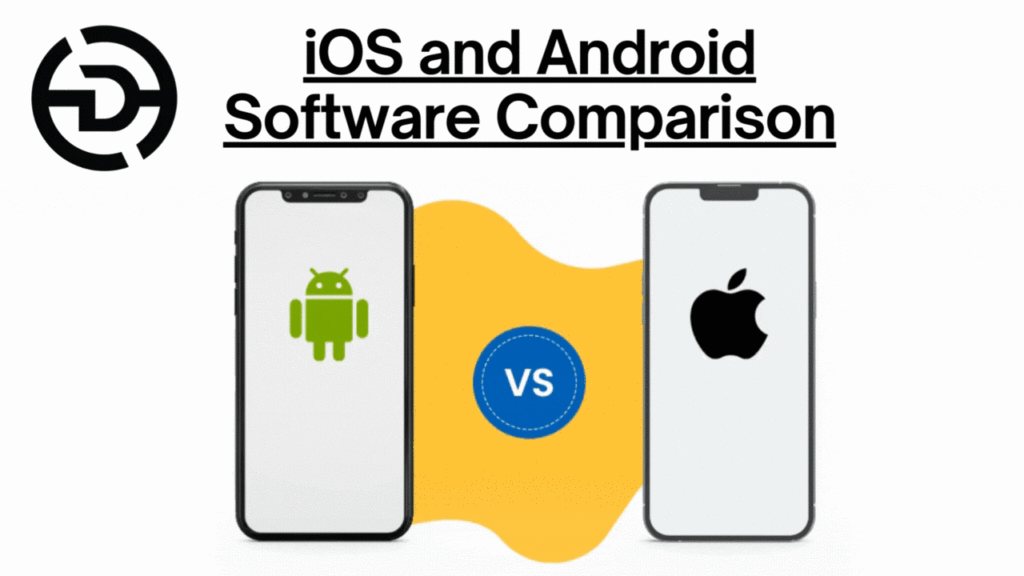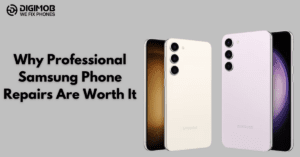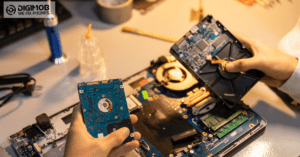In mobile technology, two giants stand tall—iOS, the proprietary software powering Apple devices, and Android, the open-source operating system that fuels a vast array of smartphones. Choosing between these platforms goes beyond mere brand loyalty; it’s a decision that shapes your digital experience. In this comparison, we’ll delve into the intricacies of iOS and Android software, exploring their strengths, weaknesses, and unique features.

1. User Interface and Design:
iOS: Elegance in Simplicity
iOS is renowned for its sleek, minimalist design. The user interface is intuitive, with easy navigation and a consistent aesthetic across all Apple devices. The simplicity of iOS is often cited as a major selling point, making it accessible to users of all ages.
Android: Customization at its Core
Android, true to its open-source nature, offers a higher degree of customization. Users can personalize their home screens, widgets, and overall themes to a much greater extent. The diverse range of Android devices also means that UI experiences can vary between manufacturers.
2. App Ecosystem:
iOS: Quality Control and Uniformity
The Apple App Store is renowned for its stringent app review process, ensuring a higher level of quality control. iOS apps are optimized to work seamlessly with Apple devices, offering a uniform experience across the ecosystem. However, the App Store does have stricter guidelines, which can result in some apps being unavailable.
Android: Diversity and Flexibility
Google Play Store, the Android counterpart, boasts a more extensive app library due to its open-source nature. While this diversity is an advantage, it can lead to a wider range of app quality. Android apps may not always be as polished for specific devices, given the fragmented nature of the platform.
3. Customization and Flexibility:
iOS: Streamlined Elegance
iOS emphasizes a controlled and streamlined experience. While this results in a more cohesive ecosystem, it limits certain customization options. Users have less freedom to tweak the system settings or change default apps compared to Android.
Android: Tailored to Your Liking
Android is the epitome of flexibility. From changing launchers and themes to installing custom ROMs, Android users have the power to tailor their devices according to their preferences. This freedom, however, requires a more in-depth understanding of the operating system.
4. Security:
iOS: Fort Knox Approach
Apple has long been praised for its robust security measures. The closed nature of iOS, combined with strict App Store policies, makes it inherently more secure. Frequent security updates are pushed across all compatible devices simultaneously, ensuring a consistent level of protection.
Android: Open-Source Challenges
Android’s open-source nature, while fostering innovation, presents security challenges. The platform is more susceptible to malware, especially for users who download apps from third-party stores. Security updates also face delays due to the fragmentation of the Android ecosystem.
5. Integration with Other Devices:
iOS: Seamless Ecosystem Integration
Apple’s ecosystem is a standout feature. The seamless integration between iOS, macOS, iPadOS, and watchOS allows users to transition effortlessly between devices. Features like AirDrop and Handoff enhance the overall user experience.
Android: Versatile, but Less Unified
Android’s compatibility with various devices extends beyond smartphones, including tablets, smartwatches, and TVs. However, achieving the same level of seamless integration as iOS across different manufacturers can be challenging.
6. Voice Assistants:
iOS: Siri’s Familiar Voice
Siri, Apple’s voice assistant, is deeply integrated into iOS. While it may not have evolved as quickly as some competitors, Siri offers a reliable voice interface for tasks, inquiries, and device control.
Android: Google Assistant’s Intelligence
Google Assistant, integrated into Android, is known for its advanced artificial intelligence capabilities. It excels in contextual understanding and provides a more conversational and intuitive experience.
Mobile repair services on Digimob’s website https://digimob.com.au
Conclusion: Choosing Your Digital Ally
In the iOS vs. Android battle, there’s no one-size-fits-all answer. The choice between these two juggernauts depends on personal preferences, priorities, and the ecosystem you’re already invested in. iOS offers a seamless, controlled experience, while Android provides customization and diversity. Whether you prioritize security, design, or integration with other devices, both platforms have their merits. Ultimately, the decision lies in what aligns best with your digital lifestyle. Whether you opt for the walled garden of iOS or the open fields of Android, the world of mobile technology is yours to explore.



